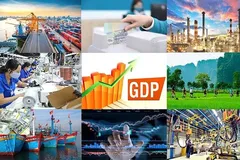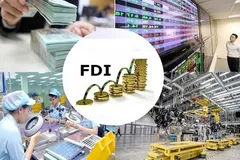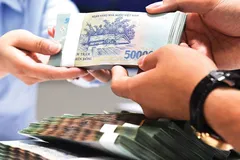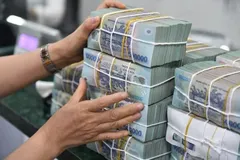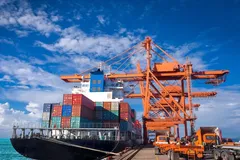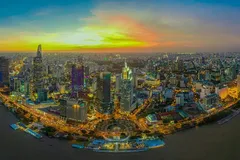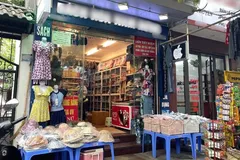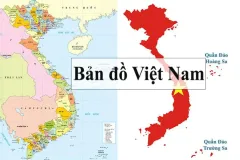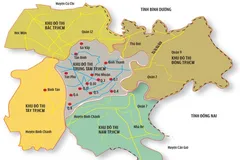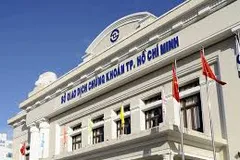
Duty-Free Ports and the National Investment Single Window
During a working session in late February 2025 with the Central Policy and Strategy Board on Vietnam's 2025 growth targets, General Secretary Tô Lâm underscored the need to study and implement duty-free port models. The aim is to position Vietnam as a major logistics hub. Additionally, he called for the development of a national investment single window to streamline administrative procedures and enhance the country’s attractiveness to foreign investors.
This proposal is not merely a policy initiative but a strategic move reflecting the urgent need to remain competitive in an increasingly fierce global economic environment. As countries worldwide continuously innovate their strategies to drive growth and attract investment, Vietnam must adopt breakthrough solutions that leverage its geographical advantages and strengthen its national competitiveness.
The duty-free port model is not new. It has proven successful in numerous open economies, offering businesses tariff exemptions, simplified customs procedures, and seamless integration into global supply chains. These incentives not only reduce costs for enterprises but also enhance investment appeal, making duty-free port operators crucial players in international trade.
A prime example of this model’s success is Singapore, home to one of the world’s top transshipment hubs. By capitalizing on its strategic geographic location and embracing free-trade policies, Singapore has transformed itself into a leading economic powerhouse.
Vietnam can take valuable lessons from Singapore’s experience. Establishing duty-free ports along its extensive coastline would significantly strengthen Vietnam’s logistics infrastructure. At the same time, the creation of a national investment single window would simplify bureaucratic procedures, reducing administrative costs and reinforcing Vietnam’s attractiveness as an investment destination.
A centralized, transparent, and efficient investment management system would not only accelerate licensing processes but also build investor confidence. By removing bureaucratic hurdles, Vietnam can unlock greater foreign direct investment (FDI) potential in key sectors such as manufacturing, high-tech industries, and services.
Turning Potential into Reality
According to Nguyễn Anh Sơn, Director of the Import-Export Department under the Ministry of Industry and Trade, free trade zones (FTZs) are a form of special economic zone where goods can be imported, stored, processed, or manufactured before export with customs privileges and often tax exemptions. These zones are typically established at seaports, major airports, or national gateways to maximize trade advantages.
FTZs have been widely recognized as effective tools for boosting exports and enhancing logistics capabilities. Professor Đặng Đình Đào, an economic expert, explains that the duty-free port concept proposed by the General Secretary can be understood as a port located within a free trade zone or tariff-free area. Such zones facilitate international commerce, attract FDI, and stimulate economic growth.
The core objective of FTZs is to drive local economic activity and expand production. Key incentives—such as import tax exemptions, waivers on domestic consumption taxes, and deferred customs duties—are critical to achieving this goal. Goods imported into these zones can be processed, manufactured, or re-exported without incurring taxes unless they enter the domestic market. This structure reduces financial pressure on businesses and enhances their global competitiveness.
However, as Professor Đào points out, administrative reform is equally crucial. Vietnam's logistics sector faces persistent challenges, including high transportation costs and complex customs procedures, which dampen investment appeal and hinder port efficiency. Streamlining these processes and cutting logistics costs will be key to unlocking the full potential of FTZs.
FTZs should not be limited to seaports alone; they must be integrated with bonded zones, customs-free zones, and transshipment hubs to optimize the value chain. Vietnam has already made notable policy strides by granting pilot mechanisms to select localities. However, to achieve a significant breakthrough, experts emphasize the need for a well-defined legal framework, strict regulatory oversight, and flexible import-export tax policies.
Vietnam is well-positioned to capitalize on shifting global trade dynamics. The ongoing restructuring of global supply chains due to geopolitical tensions and trade disputes has led multinational corporations to seek alternative manufacturing and logistics hubs. Vietnam, with its strategic location, skilled workforce, and favorable trade agreements, stands out as a prime candidate.
By implementing duty-free ports and FTZs effectively, Vietnam can elevate its role in global commerce. The benefits of such zones extend beyond logistics and trade; they create jobs, stimulate technological advancements, and foster greater economic resilience.
For this transformation to be successful, Vietnam must ensure that these initiatives are supported by strong policy frameworks, robust infrastructure investments, and close collaboration between the public and private sectors. The government must also take steps to address concerns related to regulatory transparency, ensuring that businesses operating within these zones benefit from a stable and predictable legal environment.
The shift from a control-based trade approach to one centered on facilitation marks a crucial turning point for Vietnam. Embracing innovative trade policies, reducing bureaucratic obstacles, and fostering a business-friendly environment will be key to attracting investment and sustaining long-term economic growth.
Duty-free ports and a national investment single window are not just policies—they represent a vision for Vietnam’s future as a leading player in the global economy. If executed strategically, these initiatives will help Vietnam not only keep pace with the world’s trade leaders but also carve out a dominant position in international commerce.
With decisive action, Vietnam can harness its full potential, transforming itself into a thriving global trade hub and reaffirming its commitment to economic progress and international integration.




